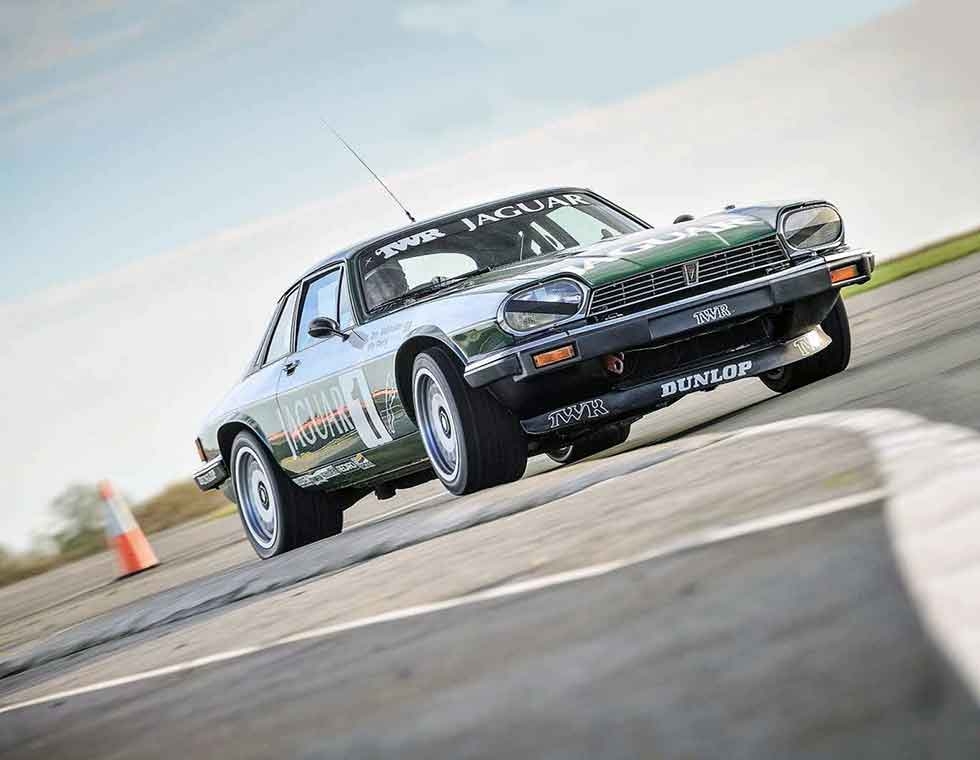
Thunder Cat TWR Jaguar XJS. Many said it would never happen but Dickie has found a way – there’s an XJS in Drive-My. In the 1980s, Tom Walkins haw took Jaguar’s luxurious, V12-engined XJS and turned it into the king of touring car racing. Three decades on, we revisit this British-built motorsport great. Text by Richard Meaden. Photography by Dean Smith.
We didn’t stand a chance. Subjected to the full force of a completely unsilenced race tuned Jaguar V12, the Oulton Park noise meter leapt to 126dB before the bloke attached to the end of it retreated with a look of genuine disgust and a bad case of tinnitus. For context, the average human pain threshold is 110dB, a military jet at take-off with full afterburner around 140dB. It was the most spectacularly unapologetic failure of a circuit noise test I’ve ever witnessed, and despite it meaning we would have to rearrange our test at a more tolerant venue, it absolutely made my day. God, I love this car.
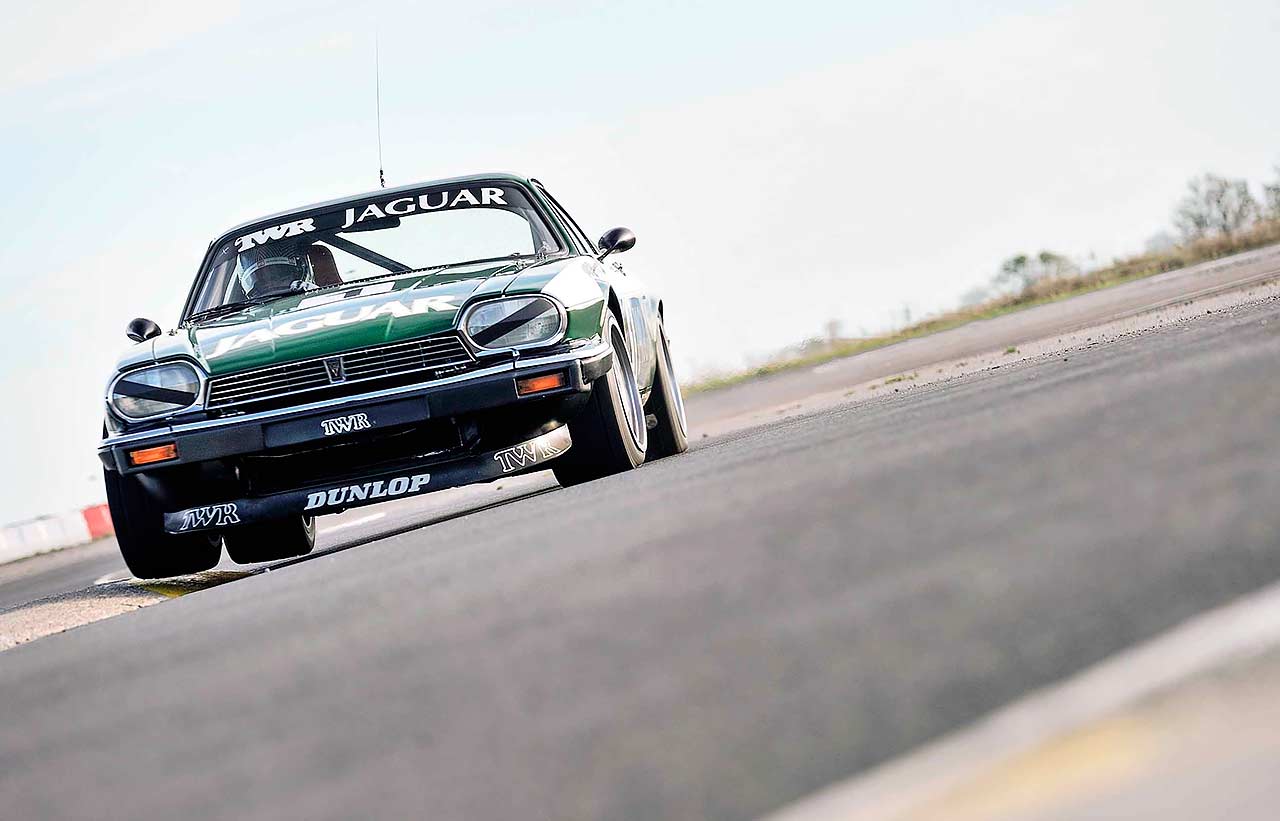
Even if you don’t know the historical significance of this 1984 TWR Jaguar XJS, you can surely appreciate its magnetism and charisma. Like all cars built to Group A regulations, it looks tougher than a knuckleduster, a perfect blend of subtlety and brutality that preserves the identity of the showroom model yet is every inch the hardcore racer in stance and intent. Dunlop racing tyres and 17in Speedline wheels barely contained by the bodywork, Perspex windows, stubby sidepipes jutting from beneath the sills and greedy fuel fillers that protrude through the bootlid make for an incongruous juxtaposition with the genteel chrome bumpers. In short, it’s perfect.
This is chassis TWR JC/84-a-007, the last of the group a XJSs built to compete in the European Touring Car Championship (ETCC). having convinced Jaguar boss John Egan to go racing f or the 1982 season, TWR team principal tom Walkinshaw (sadly no longer with us) endured two successful but ultimately frustrating years in which his potent XJs racers had the pace to win races, but failed to secure the ETCC title against the might of BMW. For 1984, TWR built three new cars, which were driven by a crack team that included a young martin Brundle. They featured a raft of major improvements such as thinner-gauge steel bodywork, a five-speed Getrag gearbox, a more powerful evolution of the 5.4-litreV12 complete with Cosworth-designed cylinder heads and pistons, and water-cooled front brakes.
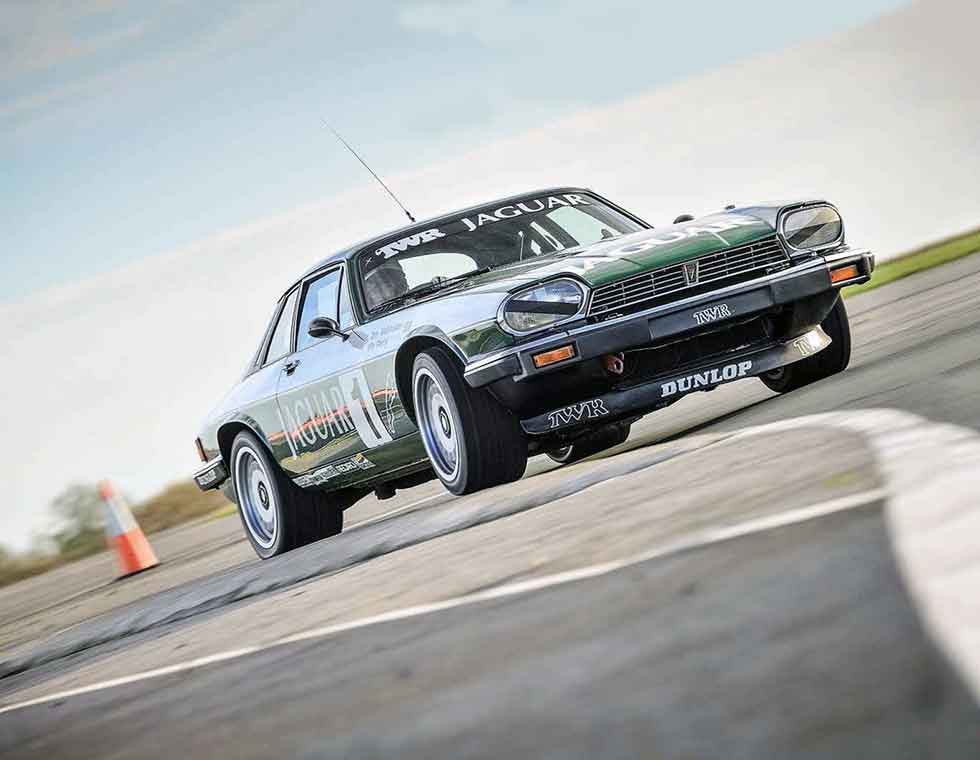
It’s well known that Walkinshaw’s interpretation of the rules could politely be described as opportunist, but how he managed to get these updates approved by the governing body is anyone’s guess. Probably in a similar manner to the way Volvo convinced the FIA it had built 500 road-going examples of the rampantly quick group a 240 turbo, but that’s another story. Whatever skulduggery was involved, there’s no arguing with the result: a fabulously potent machine with an engine conservatively rated at 450bhp (more likely closer to 500), less weight, more grip and better brakes. resplendent in a patriotic white and British racing green livery with Jaguar writ large, ‘tom’s cats’ dominated the 1984 ETCC with seven victories, amongst them a pair of 1-2-3 finishes and a win in the spa 24 hours, Jaguar’s first in a twice-round-the-clock race since a d-type won lemans in 1957.
Chassis 007 was Walkinshaw’s own car, in which he shared driving duties with Hans Heyer and Win Percy for the ’1984 season. Together they scored four victories (including the blue-riband event at Spa), one second and two thirds en route to Walkinshaw winning the ETCC drivers’ championship. It was a genuinely momentous occasion for British car enthusiasts, not least your humble scribe who was an impressionable 13-year-old at the time. I can’t begin to tell you how exciting I found this car and how much I loved Jaguar as a result. Walkinshaw too was a hero to me, both f or his driving skill and later for his subsequent success with the incredible Silk Cut-backed Group C cars. I can distinctly remember sacrificing a bedsheet to cobble together a homemade TWR Jaguar banner, which my friend Nick and I waved proudly at Silverstone. When we bumped into Walkinshaw in the paddock and he stopped to give us autographs and thank us for our support, I couldn’t believe it.
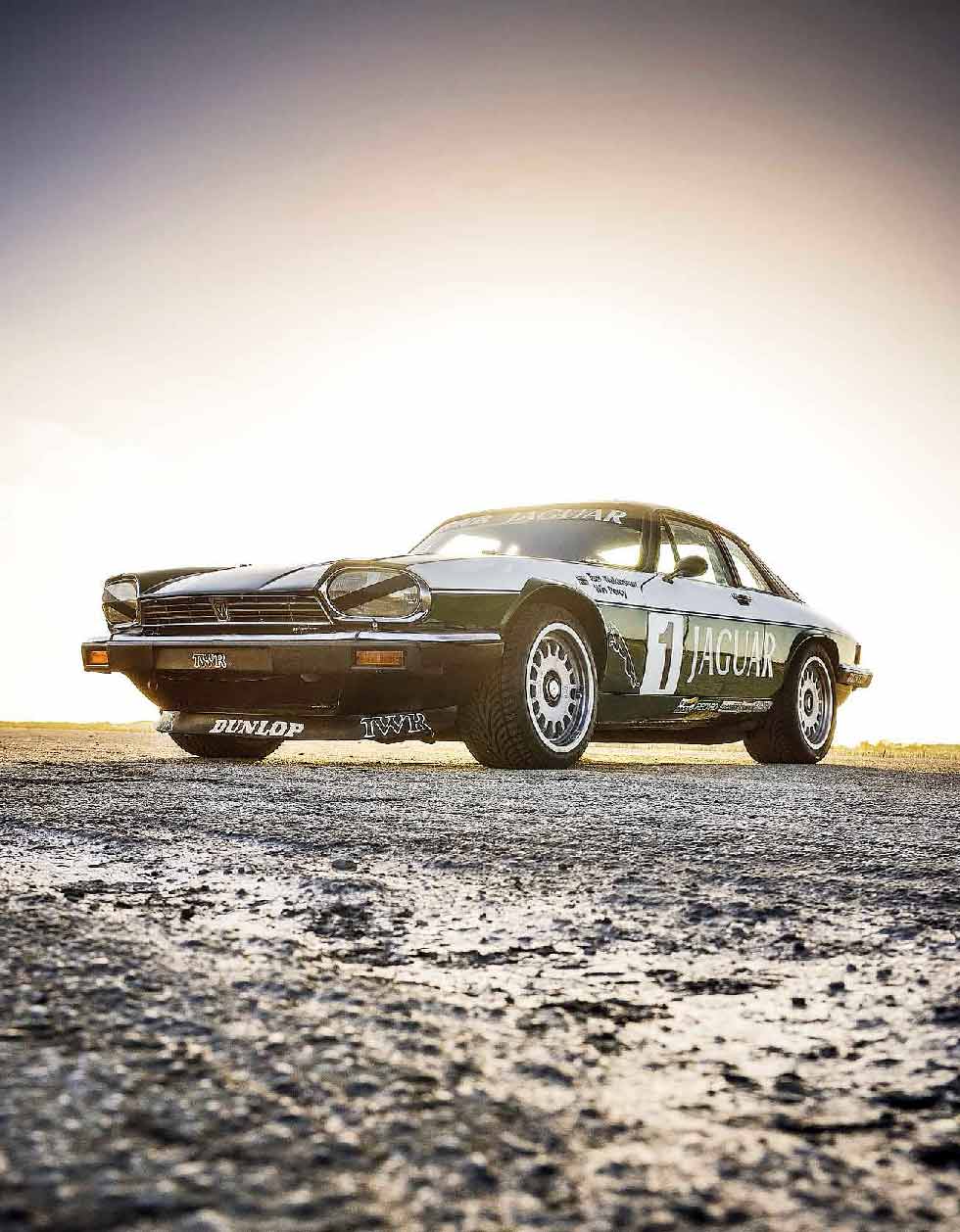
TWR’s purple and white cars are undoubtedly more famous, but it was this XJS that provided the springboard for Jaguar’s historic victories at Le Mans and in the World Sports car Championship. I’ve harboured a dream to drive it for 29 years, and now, after our brush with the Oulton Park noise police, that dream is finally coming true thanks to the ever-accommodating Blyton Park and the generosity of the Jaguar Daimler Heritage Trust. The JDHT bought the car at auction when TWR went into administration in the summer of 2003 after the collapse of the Arrows Formula 1 team, which Walkinshaw also owned, the previous year.
The JDHT has a fabulous collection of historic Jaguars that includes the marque’s most significant competition cars. They aren’t raced but are actively demonstrated at events like the Goodwood Festival of Speed and the Mille Miglia. This means they’re kept in good running order, but not subjected to the continual refreshes, rebuilds and non-original performance enhancements most historic racers undergo. In the case of TWR XJS 007, this means the car is absolutely as it was when it finished the 1984E TCC season, even down to the sun-bleached, sweat-stained Recaro driver’s seat.
Such authentic patina is rare indeed and adds another layer of magic to this captivating old warhorse. If you’re the sort of person who feels a connection with the atmosphere and history in an old house, then you’ll know precisely what I mean when I say this car has an energy and spirit that logic suggests a machine simply shouldn’t possess. To drop into the seat then reach out and grasp the big four-spoke steering wheel is to plug yourself into something very evocative indeed.
The cockpit is a rather basic affair by today’s standards. Directly ahead of you is an array of half a dozen analogue dials set into a at metal panel. To your left are another trio of gauges, the ignition kill switch and some warning lights. Below them, sprouting from the transmission tunnel, is the gearlever, which operates in a dogleg H-pattern, first being left and back.
Alongside this is an auxiliary control panel with switches for the starter, fuel pumps, ignition and lights, plus more for assorted gearbox and diff coolers. In the passenger foot well sits a huge black plastic jerrycan, which in period would have contained 25 litres of water to feed the cooling system for the front brakes. Clearly this Jag took some stopping.

It’s with some trepidation that I flick through the toggles and press the starter. When the V12 catches, it makes everyone around the car wince, but with each prod of the throttle the frowns stretch into involuntary smiles. It has a frantic, crackling idle that’s not so different from the angry sizzle of a highly tuned Mazda rotary, and the throttle response is sensationally sharp, revs leaping at the slightest tickle. As you’d expect, the clutch is properly heavy and requires a steely left leg to operate, but the gearbox is a very pleasant surprise, immediately feeling free and light as you tug the lever across and back into first. As this car predates snappily intolerant carbon clutches, it’s not too tricky to get moving, but at low speeds the steering feels ominously heavy.
Walkinshaw was a broad, beefy bloke and clearly this car – his car – was conceived before lean, whippet-sized drivers took over the sport. The track is cold and damp after a night of rain, so I’m glad of the Dunlop wets. The JDHT only runs it on wets, even in the dry, so as not to encourage lapping at ten-tenths. For these first few exploratory tours they certainly give a greater sense of reassurance and an easy, transparent connection to the car and its responses. That’s just as well considering this precious piece of Jaguar’s racing heritage has no ABS, traction control or any other form of electronic driver aid. There’s not a lot to hit at Blyton, but I don’t want to be the one to park this perfectly preserved legend in a Lincolnshire turnip field.
Even at modest revs, the engine dominates the experience, its brittle, urgent note resonating round the cockpit and urging you to stop mucking about and open the taps. As first impressions suggested, the gearbox is an absolute gem, the stick slicing through the gate as fast as you can move your hand and slotting home perfectly every time. It’s a joy to operate such an analogue machine. It’s a challenge too, but one that’s so much more rewarding than flipping a paddle and relying on electronics to finesse your inputs.
It’s a relief to find that, far from being impossibly heavy, the steering lightens with speed. You still need to drive with your shoulders as well as your forearms, but there’s a deftness and precision I wasn’t expecting and it doesn’t take long before you feel you’re beginning to get to know the XJS sufficiently to push a little harder. Stretch the V12 further and the noise intensifies to a truly feral scream, each upshift producing a sharp exhalation through the big-bore side-pipes before the shriek builds once more. It’s an extraordinary engine with a spread of power and torque that res the XJS down Blyton’s long back straight with intoxicating violence.
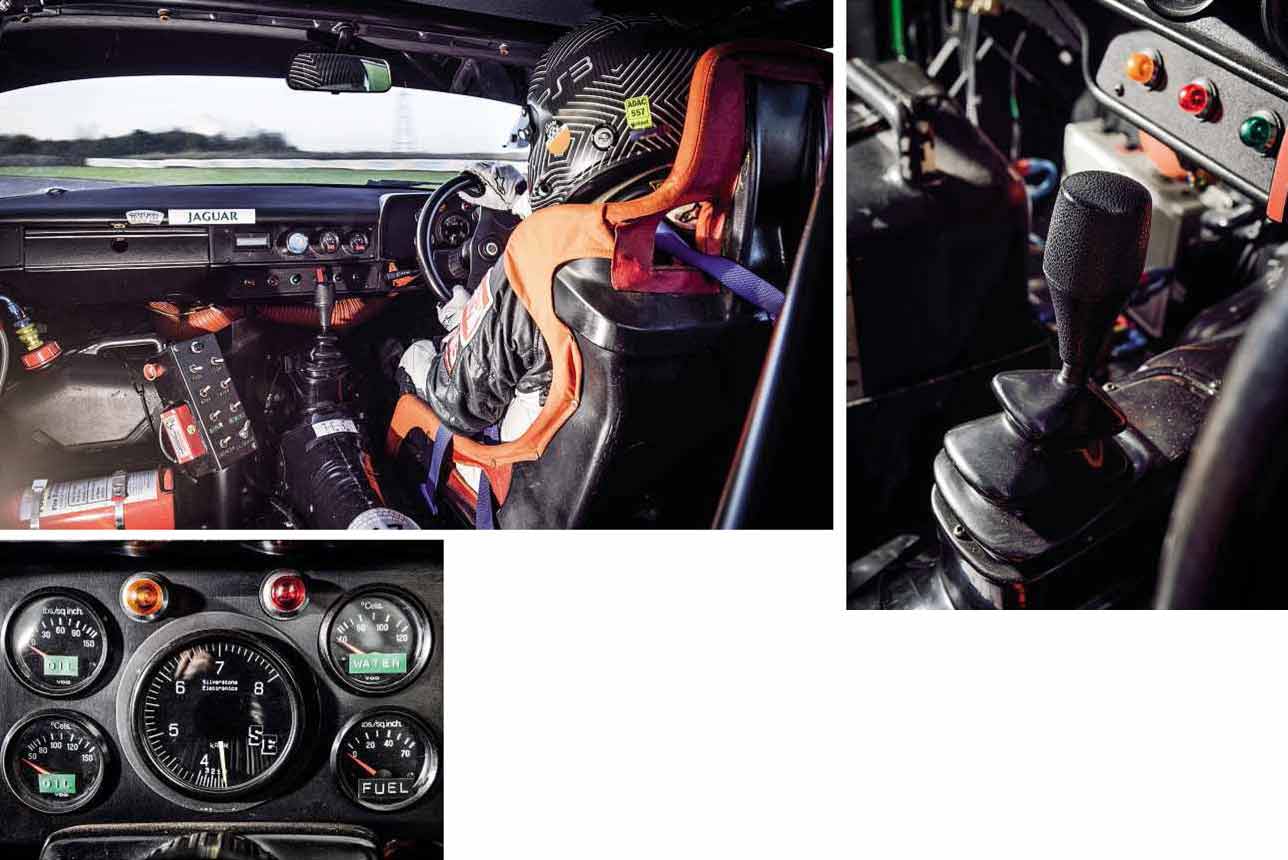
The brakes feel spongy and need respect, but I’m pretty certain that’s because the car hasn’t been run hard and not because they were especially weak in period. The longish pedal makes heel-and-toeing a bit of a stretch, but as this test is more about capturing memories than chasing a time, it really isn’t an issue. Besides, there’s more than enough fun to be had leaning on the grip from those fat 17in Dunlops and feeling the XJs begin to come alive. Even with my limited exposure it’s obvious this Jag needed hustling, but not hooning, to get the best from it. There’s loads of front-end grip and the balance feels pretty neutral until you start working the throttle a bit harder a bit earlier, at which point the rear has as much influence over your trajectory as the front.
If you’re smooth with the throttle, traction is pretty good, even as the track dries and the wets begin to chew up a bit, but once the tread blocks start to squirm, the rear end submits earlier and earlier to the yelping V12. Down the long straight the revs flare ever so slightly in fourth and fifth as the XJs catches the occasional bump, and for a few spine-tingling moments the soundtrack in my head matches that from the sensational youtube footage of Walkinshaw skimming like a pebble down Mount panorama’s conrod straight, en route to securing pole in the 1985 Bathurst 1000 in one of 007’s sister cars. I’m now here near matching tom’s record-setting top speed of more than 180mph, but it feels pretty bloody rapid nonetheless.
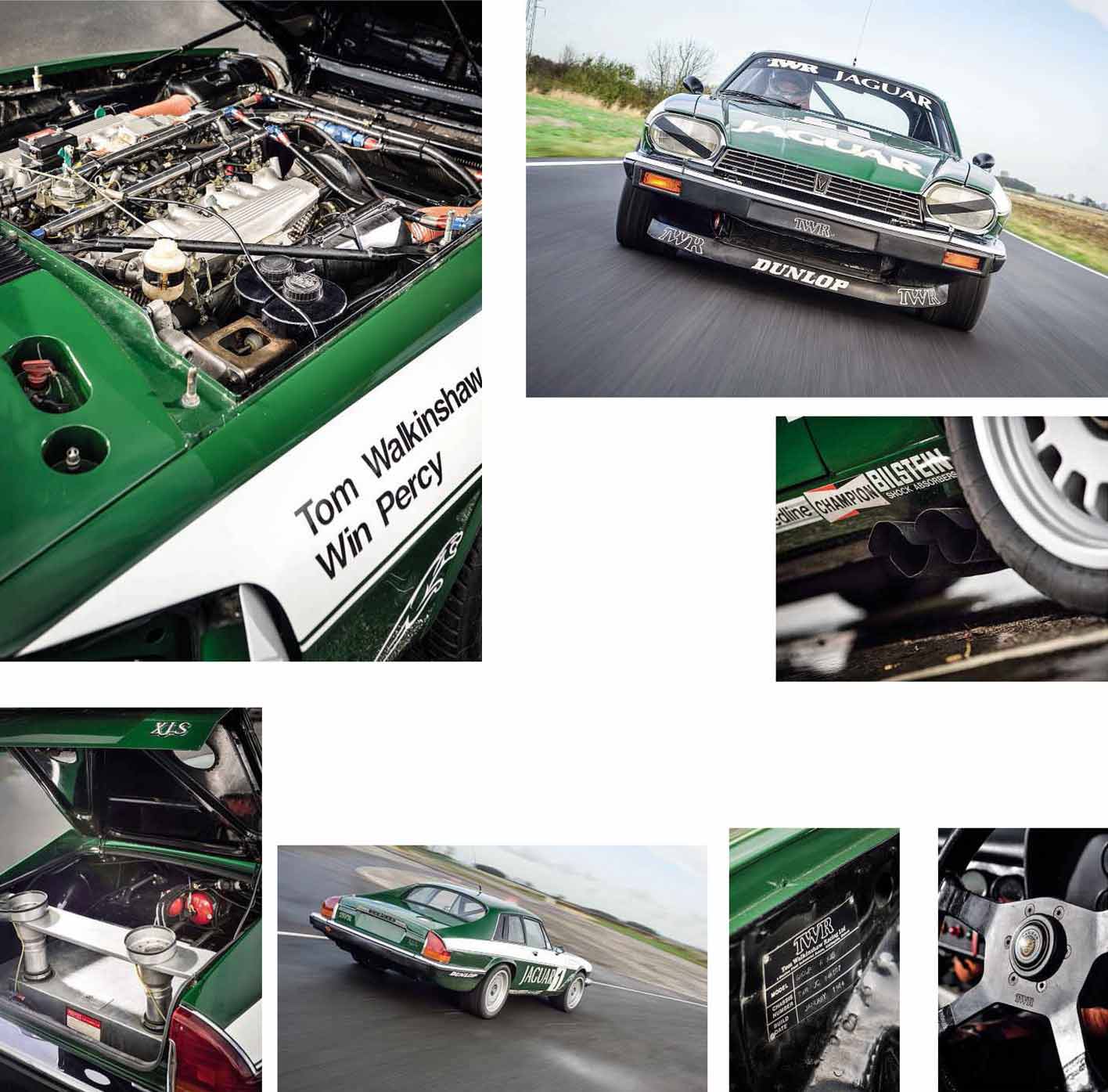
I can honestly say there’s no racing car I’ve ever wanted to drive more than this one. starting what I know is my last lap, I resist the temptation to continue at pace, instead easing back and drinking in the view, the sounds, the feel and the smell of this amazing car as I reluctantly return to the paddock. It’s almost 30 years since I stood shivering at a cold, grey Silverstone watching this very car compete – and uncharacteristically retire from – the 1984 tourist trophy. To be strapped into the driver’s seat, ears ringing from that animalistic V12 and forearms burning slightly from the exertion of tackling Blyton Park’s challenging mix of corners, is totally surreal and utterly unforgettable. Even after three decades of waiting, it’s every bit as good as I’d hoped.
As I kill the engine and sit in blissful silence for a few contemplative moments, it strikes me that this was the last production-based Jaguar to race successfully with the blessing and backing of the factory. That seems ridiculous to me, especially as I know my lingering affection for Jaguar is still based upon the impression this car and the group c legends that followed it made on me. The ill-fated F1 programme always seemed like an uncomfortable fit and has doubtless contributed to the brand’s reticence towards making an official return to racing in the nine years since, but a serious gt3 effort built around the new F-type coupe would have Jaguar racing against several of the world’s best Premium and luxury sports car brands. Jaguar, the time to captivate a new generation has come.
With thanks to Tony O’Keeffe at Jaguar, Richard Mason from the JDHT and all at Blyton Park.
TECHNICAL DATA FILE SPECIFICATIONS 1984 TWR Jaguar XJS
Engine V12, 5434cc
Power 500bhp @ 7300rpm (estimated / DIN)
Torque 399lb ft @ 4990rpm (estimated / DIN)
Transmission Five-speed manual, rear-wheel drive
Front suspension Double wishbones, coil springs, dampers, anti-roll bar
Rear suspension Lower transverse links, coil springs, dampers, anti-roll bar
Brakes Ventilated discs
Wheels 17in front and rear
Weight 1400kg
Power-to-weight 363bhp/ton (estimated)
0-60mph 4.5sec (estimated)
Top speed 180+mph
Drive-My rating
‘EVEN AFTER THREE DECADES OF WAITING, IT’S EVERY BIT AS GOOD AS I’D HOPED’
‘STRETCH THE V12 FURTHER AND THE NOISE INTENSIFIES TO A TRULY FERAL SCREAM’
‘THIS CAR HAS AN ENERGY AND SPIRIT THAT LOGIC SUGGESTS A MACHINE SIMPLY SHOULDN’T POSSESS’






